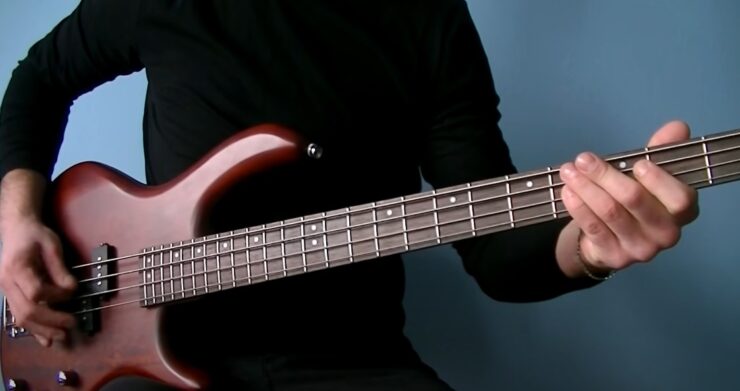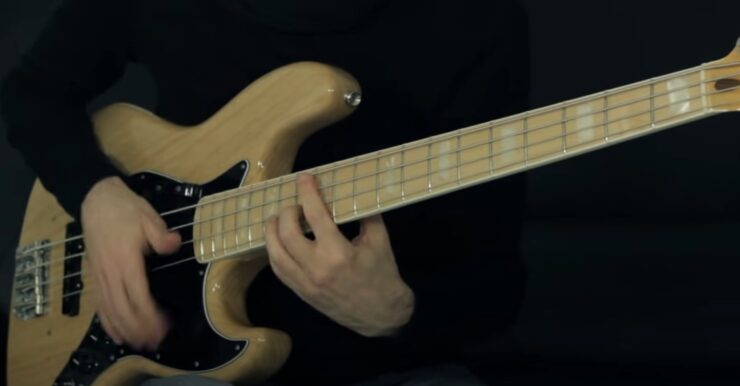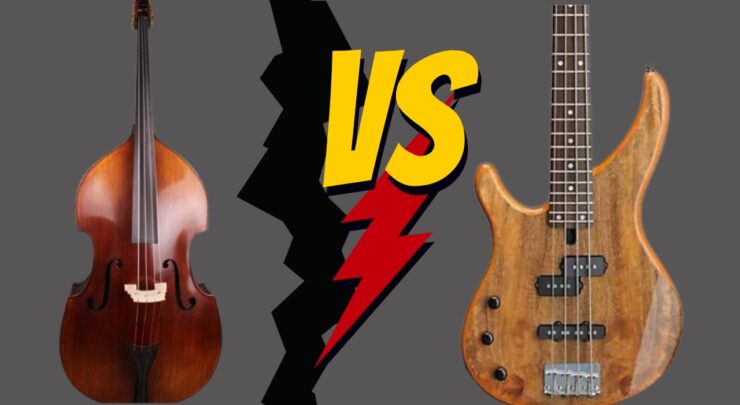After spending years as a music gear salesman, I’ve had countless discussions with customers deliberating between a double bass and an electric bass. One instance that strikes a chord is when a father and his son walked into the store.
The young lad, an enthusiastic budding musician, couldn’t decide between the deep, warm tones of double bass and the versatile, electrifying notes of an electric bass. Today, I’m here to share some insights with you, so strap in for an exciting exploration into the worlds of the double bass and electric bass.
If You Are in Hurry…
Below is a table summarizing the main differences between the two:
| Aspect | Double Bass | Electric Bass |
| Historical Context | Originated in the 15th century | Invented in the 1930s |
| Design | Hollow body, 4 strings, large size | Solid body, 4+ strings, compact size |
| Technique | Played with a bow or plucked, stand-up position | Plucked, played seated or standing |
| Sound | Warm, deep, resonant | Wide tonal range, clear, punchy |
| Genre Suitability | Classical, jazz, blues | Rock, pop, funk, electronic |
| Pros | Warm tone, expressiveness | Versatility, easy amplification |
| Cons | Size, amplification challenges | Depends on the quality of amp and effects |
Historical Context
Before diving into technicalities, let’s journey through time and understand the origins of these unique instruments.
Birth of the Double Bass
The double bass, as we know it today, came into existence during the 15th century, arising from the family of the violin. The instrument evolved to fulfill the need for a bass register in orchestras and small ensembles. Unlike other string instruments, the double bass showcases a blend of features from both the violin and viol families.
The true significance of the double bass lies in its versatility. Primarily, it served the purpose of reinforcing harmonic structures in an orchestra. However, it quickly found its place in other genres such as jazz and blues, adding depth and richness to their sonic landscape.
The Emergence of the Electric Bass
Fast forward to the 1930s, when the electric bass was born, courtesy of musician and inventor Paul Tutmarc. The electric bass or bass guitar, as it’s commonly known, was designed to produce bass tones in a more portable and louder manner than the traditional double bass.
The adoption of the electric bass skyrocketed in the mid-20th century. It became an integral part of rock ‘n’ roll and later pop music. It offered musicians the freedom to experiment with their sound, paving the way for countless music genres we know and love today.
Design and Construction
Let’s examine how each instrument’s unique design contributes to its tonal characteristics.
The Anatomy of a Double Bass
A double bass stands tall, with a length ranging from 180 cm to 190 cm. Its hollow wooden body, four strings, and long fingerboard contribute to its distinct, resonant sound. Interestingly, the double bass is the only modern bowed-string instrument tuned in fourths (E1–A1–D–G), unlike others tuned in fifths.
Double basses vary in their shape, typically adopting either a “violin” or “gamba” style. The materials used in construction also play a crucial role in sound production. Spruce, maple, and ebony are often employed for their resonance and durability.
The Structure of an Electric Bass
In contrast, the electric bass is sleeker and more compact. Its solid body, typically made from wood, is designed for comfort and playability. The bass guitar usually has four strings, but models with five, six, or even more strings are not uncommon, allowing for a broader range of tones.
Electric bass guitars rely on electromagnetic pickups to capture string vibrations, which are then amplified. This design allows for a wide array of tonal modifications, giving the electric bass its characteristic versatility. Materials such as alder, ash, and maple are commonly used, impacting the instrument’s tone and weight.
Playing Technique
The way we interact with an instrument can dramatically alter the music it produces.
Double Bass
The double bass can be played either with a bow (arco) or by plucking the strings (pizzicato). The arco technique creates long, sustained notes, making the instrument ideal for orchestral music. Pizzicato, on the other hand, gives the music a percussive feel, often used in jazz and blues.
The size and stand-up nature of the double bass demand a unique playing posture. The player typically stands or sits on a high stool, with the instrument leaning against their body. This posture, combined with the finger strength required to press the strings, makes the double bass physically demanding to play.
Electric Bass

The electric bass, however, is usually played seated or with a strap standing up, and it’s predominantly played pizzicato. Fingerstyle and slap bass techniques are commonly employed, contributing to the rhythmic foundation of many music genres.
The fretted fingerboard of a bass guitar allows precise intonation, making it easier to play for beginners. However, the range of tonal possibilities demands a thorough understanding of music theory and nimble fingerwork, especially when venturing into complex genres like progressive rock or jazz fusion.
Sound and Tone
Moving onto one of the most crucial aspects — the sound each instrument produces.
The Symphony of the Double Bass

The double bass creates a deep, warm, and resonant tone, the essence of its charm. Its acoustic nature makes it incredibly responsive to subtle changes in playing technique. Striking the strings harder or softer, or bowing closer to or further from the bridge, can drastically alter the tone.
Furthermore, the double bass’s broad tonal palette makes it ideal for a variety of musical genres. In orchestral music, it provides a solid harmonic foundation, while in jazz or blues, it can become a melodic powerhouse capable of delivering complex solos.
The Vibrance of the Electric Bass
The electric bass, on the other hand, boasts a wide tonal range and high volume capability. It has a clear and punchy tone, which can be modified extensively using amplifiers and effect pedals. This flexibility is why it’s found across diverse music genres, from the deep rumble in heavy metal to the bright pop slap bass.
With the right techniques and equipment, an electric bass can even mimic the sound of a double bass to some extent. However, it tends to lack the natural warmth and resonance that the double bass possesses, a trade-off for its versatility and ease of amplification.
Suitability to Different Genres
Next, we’ll look at how each instrument fits into various musical styles.
Double Bass in Different Genres

Traditionally, the double bass has been the backbone of orchestral and chamber music, lending depth and richness to compositions. It’s also a staple in jazz, where it often takes on a dual role of maintaining rhythm and contributing to melodies.
- Classical: The double bass shines in symphony orchestras, reinforcing the lower register and adding fullness to the sound.
- Jazz: From swing to bebop, the double bass’s expressive, dynamic range is perfect for jazz improvisation.
- Blues & Bluegrass: With its warm, soulful tones, the double bass fits seamlessly into blues and bluegrass ensembles.
Electric Bass Across Music Styles

The electric bass is ubiquitous in contemporary music — its punchy, rhythmic, and adaptable sound can be tailored to suit almost any genre.
- Rock & Pop: The electric bass lays down the rhythmic and harmonic foundation in rock and pop, providing the backbone of the band.
- Funk & Soul: With its percussive slap technique, the bass guitar adds a rhythmic groove that’s integral to funk and soul.
- Electronic & Hip-Hop: In these genres, the bass guitar can create synthesized bass lines, driving the music’s rhythm and mood.
Pros and Cons
Like everything else in life, both instruments come with their own advantages and drawbacks.
Double Bass
- Unparalleled warm and deep tone
- Highly expressive and sensitive to playing techniques
- The traditional choice for classical, jazz, and blues music
- Large size and weight make it difficult to transport
- Requires physical strength and endurance to play
- Amplification can be challenging in louder environments
Electric Bass
- Compact and relatively easy to transport
- Wide tonal range and easily amplified
- Versatile across numerous music genres
- Lacks the natural warmth and resonance of a double bass
- It can be less expressive than a double bass
- Sound heavily depends on the quality of amplification and effects
When comparing double bass and electric bass, you may wonder what sets the latter apart and why it can be relatively expensive – explore the reasons here.
Final Words
Choosing between a double bass and an electric bass depends on many factors, such as the music style, personal preference, and practical considerations. Remember, the instrument is merely a tool to express your musicality. Whichever bass you choose, embrace it wholeheartedly and let it sing your unique song.

